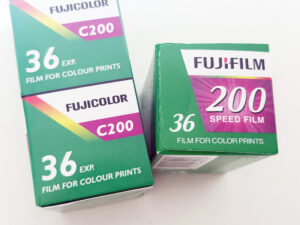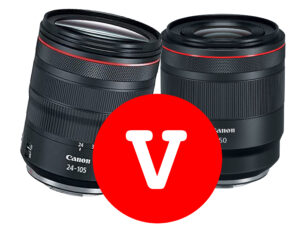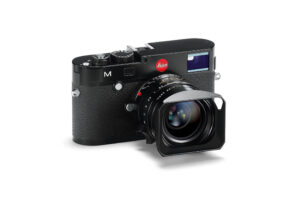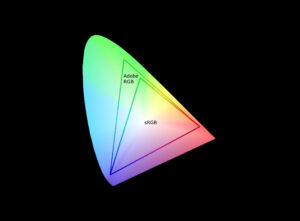When it comes to digital imaging, the debate between CCD (Charge-Coupled Device) and CMOS (Complementary Metal-Oxide Semiconductor) sensors has shaped the evolution of cameras. These two sensor technologies are at the heart of how cameras capture light and transform it into stunning images. In this article, we’ll delve into the history, technological differences, and the factors that led to the shift from CCD to CMOS, including their impact on image quality, resolution, ISO performance, and more.
The Origins of CCD and CMOS Sensors
CCD Sensors: A Revolutionary Beginning
CCD sensors were developed in the late 1960s by Willard Boyle and George E. Smith at Bell Labs. Initially designed for memory storage, they quickly proved their potential for capturing images. By the 1980s and 1990s, CCD sensors were the gold standard in digital imaging. Their ability to transfer charge across the chip with minimal loss made them ideal for high-quality imaging applications like astronomy, medical imaging, and professional photography.
CMOS Sensors: Early Limitations
CMOS technology emerged around the same time but was initially less capable than CCD for imaging purposes. CMOS sensors suffered from noise issues and lower sensitivity, which relegated them to low-end applications. However, CMOS offered one key advantage: the potential for integrating additional functions (like amplifiers and image processing) directly onto the chip, paving the way for cost and energy efficiency.
CCD vs CMOS: Technological Differences
CCD Sensors
CCD sensors use a process where each pixel’s charge is transferred across the chip and read at a single output node. This mechanism ensures a uniform signal but is slower and consumes more power.
Advantages of CCD:
- Superior image uniformity and dynamic range (or at least this was true up until 2010 in most cameras).
- Minimal noise in the final image, making them ideal for scientific and professional use.
- Excellent color reproduction and low-light performance in early implementations.
Disadvantages of CCD:
- High power consumption.
- Expensive to manufacture.
- Limited integration with other electronics on the chip, making cameras larger and heavier.
CMOS Sensors
CMOS sensors, on the other hand, allow each pixel to have its own amplifier, enabling parallel readouts. This architecture dramatically reduces power consumption and increases readout speed.
Advantages of CMOS:
- Lower power consumption (up to 100x more efficient than CCD).
- Cheaper manufacturing due to compatibility with standard semiconductor processes.
- Faster readout speeds, making them ideal for high-resolution video.
- Easier integration with on-chip functionality, allowing for smaller, more compact camera designs.
Disadvantages of CMOS (early stages):
- Higher noise levels due to the independent readout process.
- Inferior low-light performance and dynamic range compared to CCD (at first, but this is no longer the case).
The Transition from CCD to CMOS: Canon Leads the Way
During the early 2000s, Canon made a pivotal breakthrough in CMOS sensor technology. While other manufacturers continued to rely on CCD sensors, Canon invested heavily in CMOS R&D. With the launch of the Canon EOS 300D (Rebel) in 2003, Canon demonstrated that CMOS could rival CCD in image quality while offering significant advantages in speed, size, and power efficiency.

Canon’s innovation proved to be a tipping point, and other manufacturers followed suit. CMOS sensors rapidly improved, addressing early noise issues and surpassing CCD in almost every aspect by the mid-2010s.
Nikon took a white to catch up with the CMOS sensor technology. At the time the Canon EOS 350D was on the shelf with a CMOS, Nikon still had a popular camera in the Nikon D50 with a CCD Sensor.

CCD vs CMOS: Differences in Image Quality
Color Quality
CCD sensors were initially known for their superior color accuracy and dynamic range. The lack of on-chip processing meant that CCD sensors produced raw, uncompressed data, which photographers and scientists appreciated for its fidelity. However, modern CMOS sensors have closed the gap, offering excellent color reproduction through advanced image processing algorithms.
Resolution Capabilities
Both CCD and CMOS sensors support high-resolution imaging, but CMOS has taken the lead in recent years. With innovations like back-illuminated (BSI) CMOS sensors, manufacturers now achieve resolutions exceeding 100 megapixels in medium-format cameras while maintaining manageable noise levels.
ISO Capabilities and Low-Light Performance
Early CCD sensors had better low-light performance due to lower read noise, but modern CMOS sensors excel with superior ISO performance. Technologies like dual-gain architecture and stacked sensors allow CMOS to capture clean images even at high ISO levels, making them the go-to choice for low-light photography and videography.

Dynamic Range
Dynamic range, which measures the sensor’s ability to capture detail in highlights and shadows, was long dominated by CCD. However, CMOS has caught up with innovations like multi-exposure HDR processing and dual-pixel technology, delivering exceptional dynamic range.
CCD vs CMOS: Current Market Landscape
Today, CMOS sensors dominate the market. From smartphones and DSLRs to security cameras and industrial imaging, CMOS sensors are everywhere. Fact is, for those who want to experiment with lighting and have the most versatility, CMOS is the best choice.

CCD sensors are now mostly limited to niche applications like scientific imaging, where their noise-free performance and color fidelity still hold value. However, the rapid pace of CMOS innovation continues to erode these advantages.
Why CMOS Sensors Dominate Today:
Cost Efficiency
CMOS sensors are cheaper to produce and integrate into devices.
Power Consumption
Their energy efficiency makes them ideal for mobile devices.
Versatility
On-chip functionality allows for smaller, feature-rich designs.
Performance
Modern CMOS sensors outperform CCD in resolution, speed, and ISO performance.

CCD vs CMOS Images: Aesthetic Differences
Some photographers claim that CCD sensors produce a more “organic” or film-like look, with smoother tonal gradations and a subtle glow. This is partly due to CCD’s uniform charge transfer process, which minimizes artifacts.

CMOS sensors, by contrast, are often described as more clinical. They deliver sharp, high-resolution images but can sometimes appear overly processed, especially when paired with aggressive in-camera software. However, this gap has narrowed significantly with advancements in image processing technology.



Is the Future of Sensor Technology CCD or CMOS?
The future is firmly rooted in CMOS. As technology advances, CMOS sensors continue to break new ground in resolution, speed, and dynamic range. Emerging innovations like stacked CMOS, global shutters, and AI-powered image processing will likely cement CMOS’s dominance in both consumer and professional imaging.
CCD sensors will remain in specialized fields where their unique characteristics are essential, but their role in mainstream photography is fading rapidly.
CCD vs CMOS – Which is Better?
The answer depends on the application. For most users, CMOS sensors offer unparalleled performance, efficiency, and affordability. CCD sensors still have a place in specific scientific and industrial fields, but their era as the dominant imaging technology has passed.
Canon’s early adoption of CMOS led to an industry-wide revolution, and today, CMOS sensors power everything from smartphones to professional cameras. Whether you value resolution, low-light performance, or cost, CMOS is the clear winner in today’s digital imaging landscape.
By understanding the differences between CCD and CMOS, you can appreciate the technological strides that have shaped the cameras we use today. Whether you’re a professional photographer or a casual enthusiast, the evolution from CCD to CMOS marks a defining chapter in the history of photography.







































































